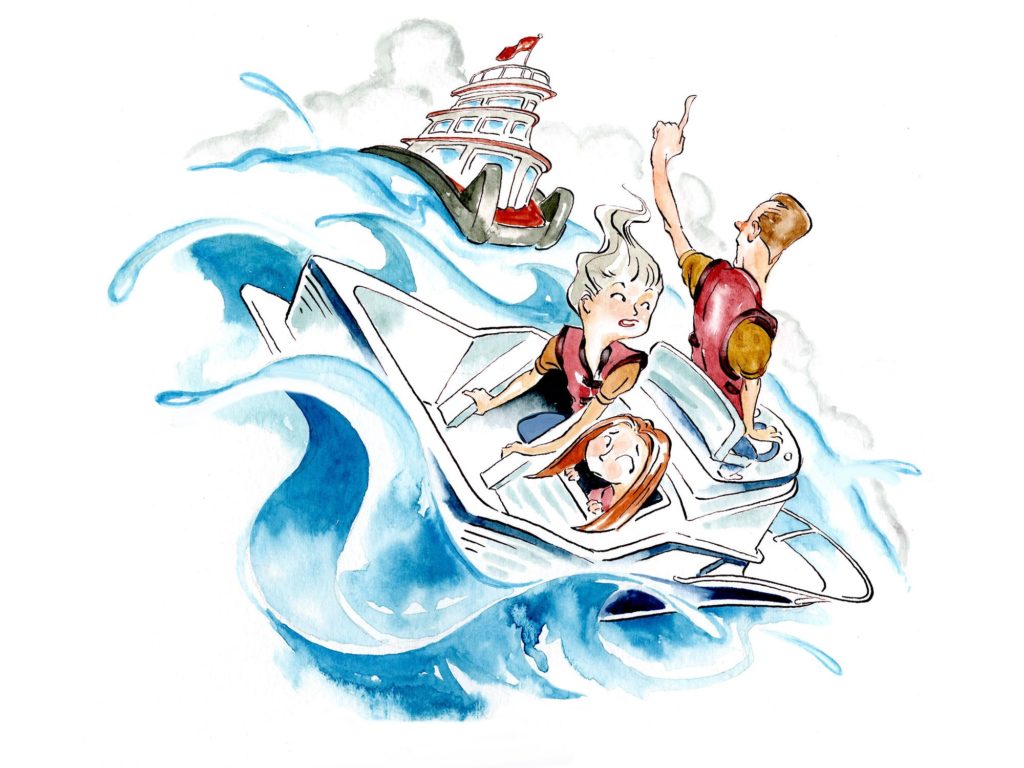
It was a beautiful August afternoon in Maryland, and my fiancée, her granddaughter and I decided to take my 28-foot cabin cruiser down the South River and out into the Chesapeake Bay to the picturesque Thomas Point Shoal Lighthouse, which was 5 miles from the marina. Once there, we decided to go visit Annapolis, about 7 miles farther across open water dotted with crab traps. We went down Ego Alley and meandered through nearby Back Creek before heading home. I noticed the voltmeter was reading low and slowly dropping, but I pushed on.
The seas picked up to about 2 feet on our bow, making for a rough ride. Suddenly, the boat jerked and veered hard to starboard. I looked around and saw the anchor line leading behind the boat, pulling a crab-pot float (more on this later). The anchor had jumped off its hook and deployed. We stopped the boat, and I hauled in the anchor, which had its shank bent 45 degrees.
I went to restart the boat, and nothing. Both banks of batteries were apparently dead. I thought about checking the engine compartment, but the boat was rocking a lot.
We donned life jackets, and I called TowBoat US. I deployed the anchor again, but we kept drifting because it would not bite with its shaft bent. We were lying sideways to the 2-foot seas, and the cooler and refrigerator down below upchucked their contents. The granddaughter also upchucked her contents all over the cockpit.
Ninety minutes later, Capt. Greg with TowBoatUS showed up and towed us safely back to our marina.
We made it in before dark. Upon raising the boat on its lift, there was a metal crab pot firmly wrapped around our prop. So, we would not have been able to make it home, even if I had found and fixed the loose battery connections that prevented the motor from restarting.
What we did right: donning life jackets, keeping calm, deploying the anchor to slow our drift, and having three working cellphones and a handheld VHF. Had I gone into the engine compartment to troubleshoot, I might have been injured with the severe rocking.
What we did wrong: not fully checking everything before leaving the slip, not stopping in Back Creek to check the voltage drop, and not staying clear of the crab-pot area.
Finally, I have since installed locknuts on the battery connections.
Jim Anderson
Davidsonville, Maryland
The U.S. Coast Guard is asking all boat owners and operators to help reduce fatalities, injuries, property damage, and associated healthcare costs related to recreational boating accidents by taking personal responsibility for their own safety and the safety of their passengers. Essential steps include: wearing a life jacket at all times and requiring passengers to do the same; never boating under the influence (BUI); successfully completing a boating safety course; and getting a Vessel Safety Check (VSC) annually from local U.S. Coast Guard Auxiliary, United States Power Squadrons(r), or your state boating agency’s Vessel Examiners. The U.S. Coast Guard reminds all boaters to “Boat Responsibly!” For more tips on boating safety, visit www.uscgboating.org.








